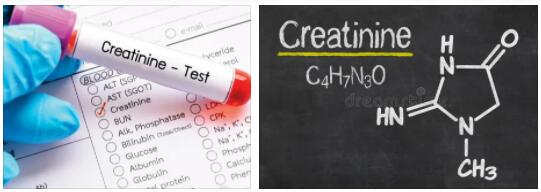In order to know the meaning of the term creatinine, it is necessary, first of all, to know its etymological origin. In this case, we can state that it is a word that derives from Latin, exactly it is the result of the sum of the noun “cratina” and the suffix “-ina”, which is synonymous with “substance”. Cratina, in turn, comes from the Greek “kreas”, which can be translated as “meat”.
Creatinine is a substance generated by the metabolism of the muscles. This organic molecule is filtered by the kidneys and excreted through the urine: therefore, a high level of creatinine in the blood indicates a kidney disorder, while a low level is often associated with malnutrition.
According to abbreviationfinder.org, muscle metabolism use creatine as a nutrient. Said organic acid, when degraded, gives rise to creatinine, which must be excreted from the body. The measurement of creatinine, in this framework, is one of the most frequent diagnostic methods to analyze the functioning of the kidneys.
It is usual for a creatine clearance test to be carried out. For this study, urine and a blood sample are collected, then comparing both amounts of creatinine using a formula that allows clearance to be calculated. The result provides useful information about kidney function and the degree of kidney failure.
The level of creatinine in the blood depends on the person ‘s gender, age, and weight. This means that there is no single adequate level in the human being, but that the values that are considered normal change according to the mentioned variables.
As a reference, it can be indicated that the normal creatinine level in an adult woman is between 0.6 and 1.1 mg/dL, while in a man it is between 0.7 and 1.3 mg/DL. In general, women have a lower level than men since they usually have less muscle mass. The values that are considered normal, however, may vary depending on the laboratory.
Precisely because it is associated with muscle mass, we must be clear that a person who practices sports can have higher levels of creatinine than another who does not exercise. This without forgetting that these levels can be higher due to the intake of certain foods.
Beyond these references, it is necessary for a doctor to analyze the results of a blood creatinine measurement study to determine whether they are normal or not.
It is interesting to know that there are a series of symptoms or signs that make it clear that a person may have problems with creatinine. Specifically, among the most significant are the following:
-He suffers from nausea and even vomits.
-He’s lost his appetite.
-Decreases weight clearly.
-Both his feet and his hands have a swollen appearance.
-He perceives that his urine has changed in terms of color and even the smell of it has also changed.
-Feel frequent headaches.
-She feels more fatigued.
When you have high levels of creatinine in the blood, the doctor will establish the necessary guidelines to reduce them, among which may be increasing the intake of fruits, vegetables, and vegetables, as well as drinking at least 2 liters of water daily.
